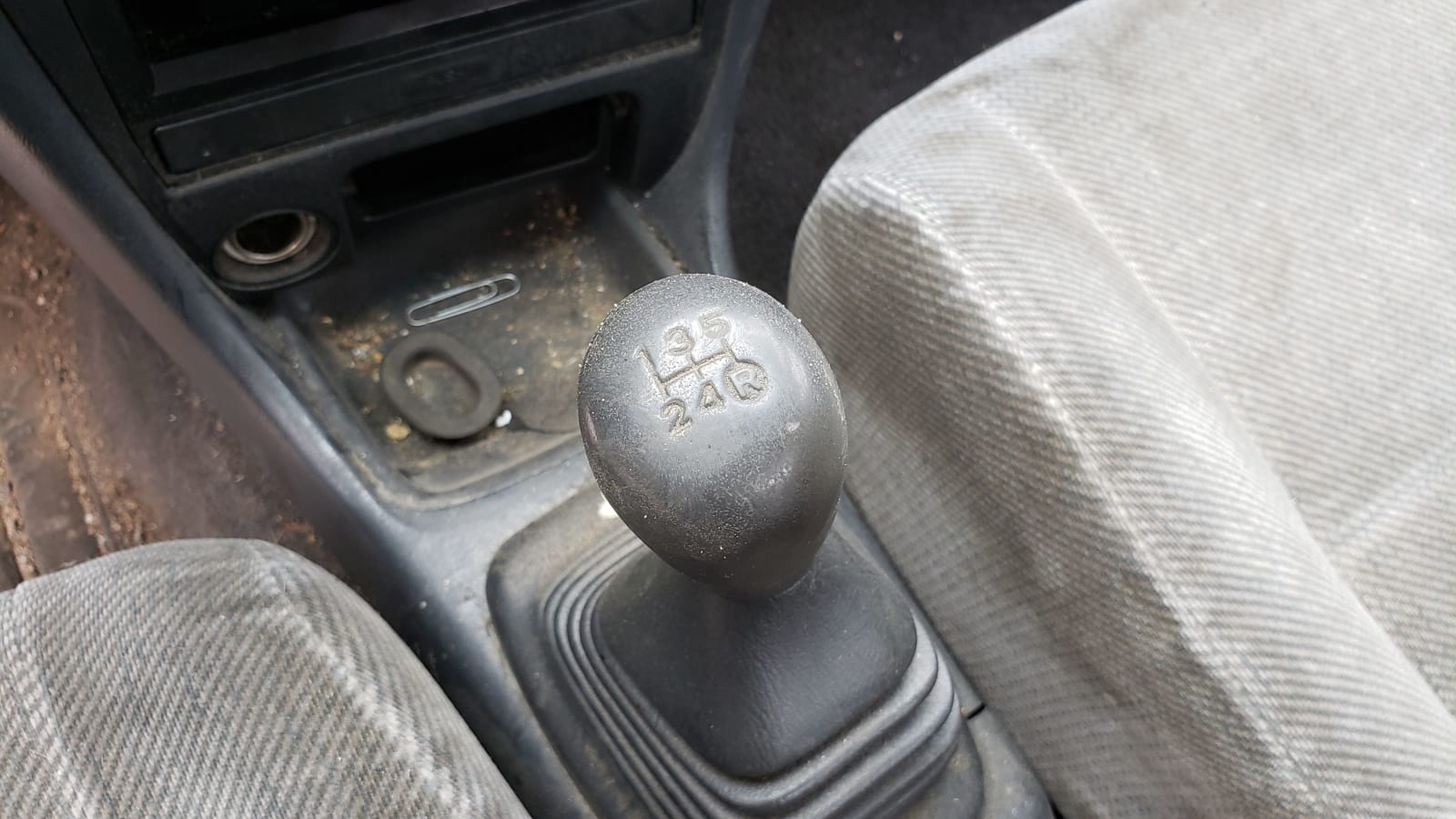While checking car graveyards for interesting pieces of automotive history, I’m always on the lookout for vehicles showing impressive final mileage figures on their odometers. This task is made more complicated by the fact that most manufacturers stuck with five-digit odometers in their U.S.-market vehicles into the 1980s or even 1990s; after the turn of the century most cars went to digital odometers that don’t display anything when in a battery-less discarded hulk. That means I’m going to poke my head into hundreds of junked 1983-1999 cars (and every Volvo and Mercedes-Benz), most of which show around 120k miles, before I strike gold with a 300K-plus-mile one. Here is such a car: an ordinary AE102 Corolla whose owner or owners kept serious miles passing beneath its tires for better than a quarter-century.
Toyotas have always been screwed together quite well, and I’ve found plenty of others in boneyards with big final odometer readings. For example, a 1988 Tercel 4WD wagon that blew past the 400,000-mile mark, a 1985 Camry with 331K miles, a 1987 Camry wagon with 322K miles, and a 1990 Geo Prizm (actually a Corolla) with 321K miles. Of course, Mercedes-Benz holds the top several places in my pantheon of high-mileage junkyard cars: a 1987 190E with 601K miles, a 1981 300SD with 572K miles, and an apocalyptic 1985 300SD with 535K miles. Don’t feel left out, Volvo fanatics, because you can be proud of this 1990 740 Turbo wagon with 493K miles (and plenty of 300K-plus-mile 240s). Because Detroit eschewed six-digit odometers for so long, we’ll never know how many zillion-mile American cars I’ve walked past; a lone 363K-mile 1986 Olds Calais must carry the flag for many others that got crushed in high-mile anonymity.
With some notable exceptions, most high-mile junkyard cars I find don’t look like clapped-out hoopties. That’s because you must perform all the important scheduled maintenance on any vehicle, no matter how well-built, if you want it to last much beyond the 100,000-mile mark, and the kind of owner who does that tends to be the sort of person who loves their car … even if it is just an invisible transportation appliance, such as a dime-a-dozen E100 Corolla sedan. This car appears to have received some body damage during its final few months or years, but overall looks solid.
The condition of a junkyard car’s interior says a lot about the level of care it received during its life. Note the clean upholstery and non-trashed trim.
When you find the original Monroney sticker still in a discarded vehicle, you know you’ve found one that had a meticulous first owner who saved everything that came with the car. I rescue all the Monroneys I find in junkyards and give them to my fellow car journalist Andrew Ganz, who has an amazing collection, so this one will be preserved for a future Monroney Museum.
It appears to have been sold new in Boulder, Colorado.
Then it looks to have been traded in at John Elway Toyota (just south of Denver) when it still had that New Toyota Smell.
After that, the odometer just kept turning and turning and turning. There’s an ignition key on a wire loop around the steering column, which means it probably got traded in again (or perhaps it was stolen, got some body damage during its unwanted change of ownership, and totaled by the insurance company). Either way, not many used-car shoppers are willing to buy a small sedan with astronomical mileage and three pedals.
The Monroney tells us that the original buyer checked the boxes for air conditioning, tilt wheel, power windows, and some other nice extras. Getting the manual transmission saved 800 bucks on a $13,908 car (that’s about $1,435 on a $24,915 car, in 2021 dollars), and there’s a good chance the manual kept the car alive an extra 100,000 or so miles (we can assume there was at least one clutch job over the years).
I find a lot more high-mile Civics in junkyards than I do Corollas, and I think this is the result of your average Civic being a lot more fun to drive than your average Corolla. Both types have shown top-notch build quality since the earliest American sales (I have owned a half-dozen of each type over the decades, and I give the Corolla a very slight edge in the made-to-last-forever department), but perhaps it’s just a bit easier to fall in love with a fun reliable car than a sensible reliable car. Insufficient love for your car means you won’t be willing to do, say, that head-gasket or transmission-repair job when the time comes. Of course, cars that cost more tend to get better maintenance, which is why this 1983 Accord blows away every junkyard Civic I’ve ever found in the King of the Odometers competition.
The Corolla is a Japanese design, but this car is exactly as American as any Geo Prizm; it was built by red-white-and-blue UAW shoprats in the California plant where Teslas are made today (and where many of the original Pontiac GTOs and Olds 442s were assembled during the 1960s).
Because someday you’ll move to Seattle. Or write the Great American Novel. Or something. Don’t you want a car that keeps on chugging for 25 years and 311,490 miles?
I don’t speak Japanese, but I can tell this home-market commercial isn’t touting the Corolla’s blistering track performance.
Source: www.autoblog.com










